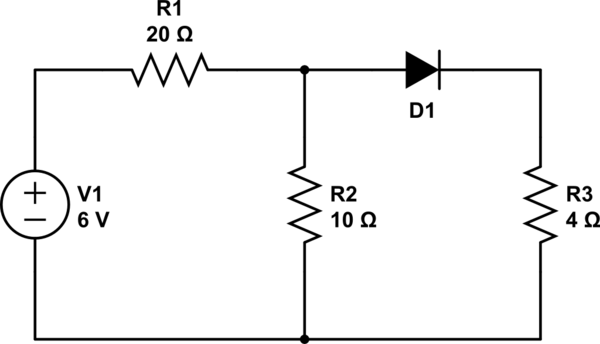Im having issue with this problem. The question asks for the minimum Vs voltage to cause the diode to be on (current flowing through diode). This same question also asks for the current through the diode ID if Vs was 6 volts. The issue Im having is that the answer they give is 122 mA, where as my answer using either .6 or .7 as the voltage drop across the diode comes up too high (around 140 mA). So far this book uses only the ideal diode model and uses usually .6 for the voltage drop. Even when I used 0 volts for the drop across the diode I still came up with a current much higher than theirs. So I have no idea what value they are using for the voltage drop across that diode in order to use it when solving the minimum value for Vs in the second half of the problem!
\$\begingroup\$
\$\endgroup\$
2
-
\$\begingroup\$ The 122mA answer is correct with \$V_d = 0.7V\$. If you show your work, we might be able to find the mistake you've made. \$\endgroup\$– helloworld922Commented Oct 22, 2015 at 23:11
-
1\$\begingroup\$ Hint: Think about how you can combine resistors, and thevenin equivalents. \$\endgroup\$– The PhotonCommented Oct 22, 2015 at 23:13
Add a comment
|
1 Answer
\$\begingroup\$
\$\endgroup\$
The book is using 0.7 volts for Vd. Here is a way to solve this circuit.
First off you can simplify by combining the 6 and 12 Ohm resistors.

simulate this circuit – Schematic created using CircuitLab
Which becomes:

Then you can use Norton's theorem on the Voltage Source and the 20 Ohm resistor:

Combine parallel resistors:

Norton again:

Now you can write a simple equation:
2V = 6.667i +.7 + 4I

